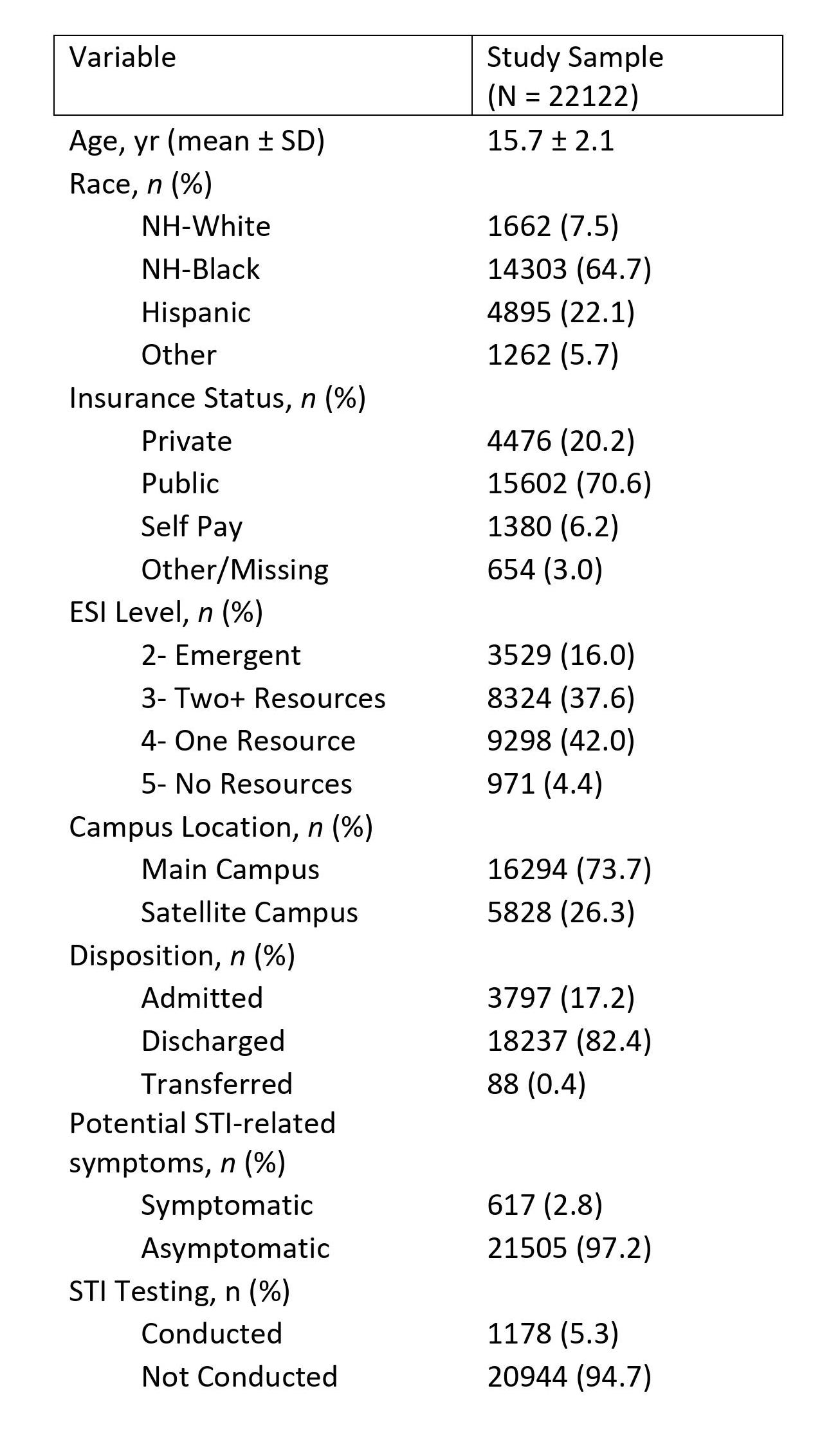Emergency Medicine
Session: Emergency Medicine 4: Infections
110 - Racial differences in testing for sexually transmitted infections in adolescent males presenting to the emergency department
Saturday, May 4, 2024
3:30 PM - 6:00 PM ET
Poster Number: 110
Publication Number: 110.1330
Publication Number: 110.1330

Alicia Rolin, MD ScM (she/her/hers)
Pediatric Emergency Fellow
Children's National Health System
Washington, District of Columbia, United States
Presenting Author(s)
Background: Adolescents account for nearly 50% of all sexually transmitted infections (STI), with minoritized communities disproportionately affected. There are racial differences in STI testing for symptomatic females, with Black adolescent females nearly five times more likely to be tested than whites. However, it is unknown whether a similar bias exists for adolescent males.
Objective: To determine whether STI testing is associated with race and ethnicity in adolescent males in a pediatric emergency department (ED)
Design/Methods: Retrospective cross-sectional analysis of adolescent males aged 13 to 21 years with ED visits to either of two campuses of a large urban pediatric hospital between January 1, 2021 to July 31, 2023. The primary outcome was performance of STI testing. Secondary outcomes measured associations of STI testing with clinical and demographic characteristics using univariable and multivariable logistic regression.
Results: There were 22,122 adolescent male ED patients during the study period, of which 1178 (5.3%) of the had STI testing. 617 patients (2.8%) reported potentially STI-related genitourinary symptoms. Patient characteristics are summarized in Table 1.
Of the 617 symptomatic males, 242 (39.2%) had STI testing. In a multivariable model including age and campus location, NH-Black males had significantly higher rates of testing compared to whites (50.2%; aOR = 2.7 [95% CI 1.2, 5.8]). (Table 2)
Of the 21505 asymptomatic males, 4.5% had STI testing. In a multivariable model similar to above, minoritized youth had significantly lower rates of testing compared to whites: NH-Black (4.9%; aOR 0.6 [0.4, 0.7]), Hispanic (3.6%; aOR 0.6 [0.5, 0.8]). (Table 2)
Conclusion(s): Symptomatic minoritized adolescent males are significantly more likely to be tested for an STI, mirroring the racial differences previously identified for STI testing for symptomatic adolescent females. However, asymptomatic minoritized adolescent males were significantly less likely to be tested for an STI compared to their white peers. This may be a reflection of the national data showing that minoritized populations are often less likely to be offered preventive care services than their white counterparts. More research is needed to determine possible causes of these racial and ethnic differences in care, and to identify strategies to mitigate potential racial bias in STI testing in the ED.


